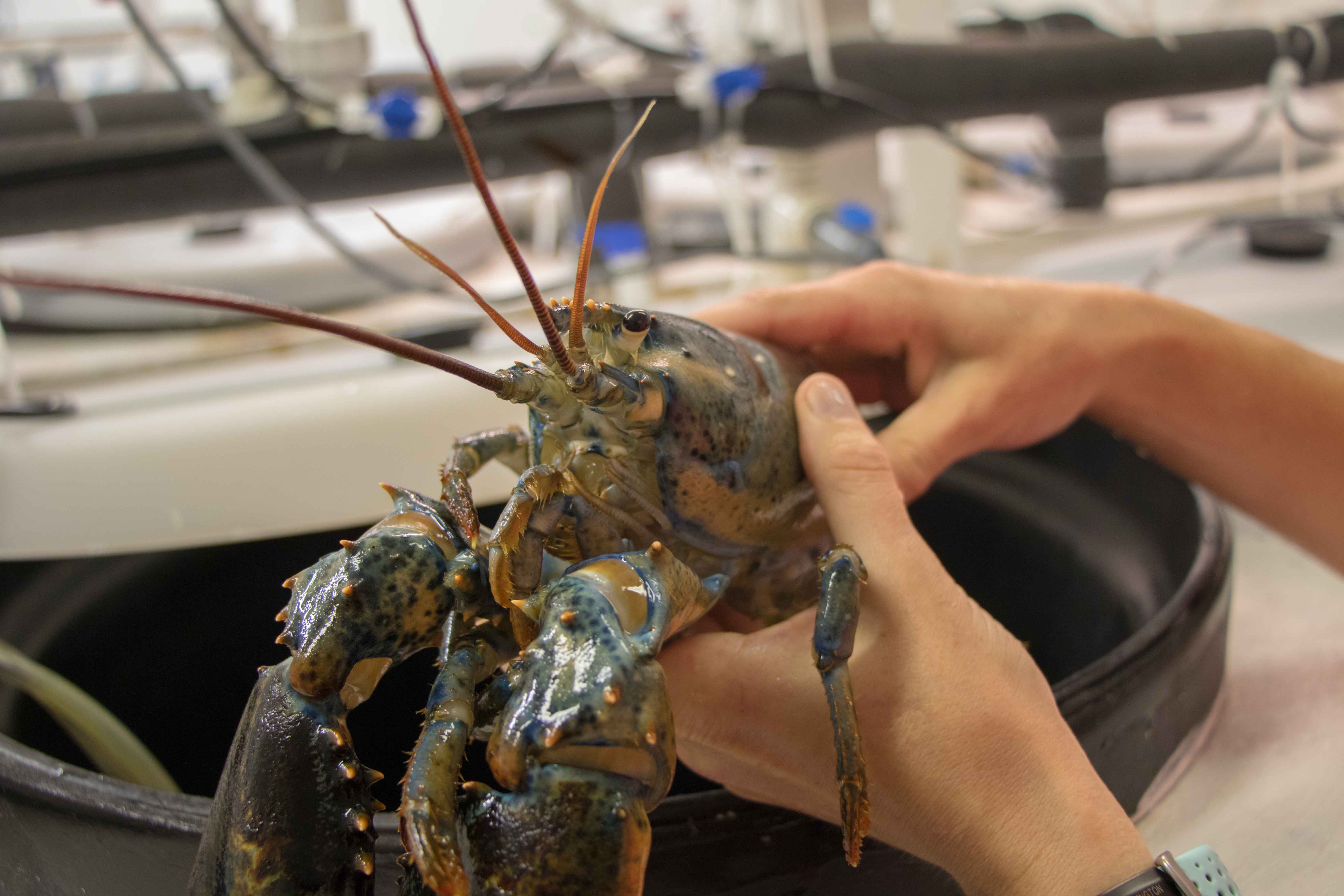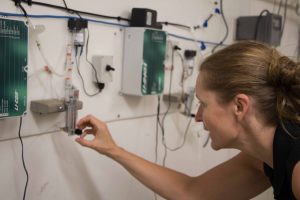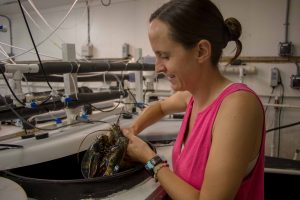
UMaine Team Develops Innovative Lab to Bring Ocean Acidification Experiments Inland
Liz Theriault, ME EPSCoR Student Writer
A new risk to marine ecosystems is emerging. Ever-rising levels of carbon dioxide in the world’s oceans cause a rise in water pH, leading to ocean acidification (OA). Researchers nationwide are questioning what the effect on our waters, marine resources and commercial industries will look like. Maine is no exception to these changes. Heightened levels of ocean acidification, coupled with the fact that the Gulf of Maine is the second most rapidly warming place on the planet, is causing extreme environmental changes that could threaten Maine’s coastal economy.
To tackle this issue, Sustainable Ecological Aquaculture Network (SEANET) researchers and technicians at the University of Maine Aquaculture Research Institute’s (ARI) Orono facility, with funding from the NSF EPSCoR SEANET Award, designed and built the first state of the art Ocean Acidification Lab in Maine.
Neil Greenberg, the Assistant Director of the Aquatic Operations at ARI , built the system along with Robert Harrington, a research associate at the ARC. The pair constructed the lab based off of basic ideas from other recirculating systems that exist throughout the nation. However, coastal labs are able to pull water directly from the ocean into their systems— something that cannot be done in a landlocked facility. To address this, Greenberg and Harrington designed their tanks to reuse the same water continuously.
“We compress air, scrub it, remove the carbon dioxide, and then start from scratch with gas injection,” explained Robert Harrington. “We are treating the water in header tanks with CO2, controlled by pH probes that detect the pH level to see if it’s high or low.”
When a researcher comes in with a project, they can then adjust the acidification in the tanks by changing the pH control settings. “The controller actually maintains [the pH levels] by diffusing CO2 into the header tank, so it reaches the desired pH,” said Robert Harrington. “Then that header tank water drips down into the treatment tanks, where we hold lobsters, mussels, or other species for the research projects.”

Two research projects have been conducted so far in these new recirculating tanks. Since these tanks are larger than those typically used in other labs, researchers were able to study larger and older animals, such as lobsters and razor clams, instead of just their larvae.
The first project was led by Heather Hamlin, an Associate Professor of Aquaculture at the School of Marine Science and the Aquaculture Research Institute, with her graduate student researcher Amalia Harrington, a SEANET Ph.D. Candidate at the University of Maine. Hamlin’s research tested the levels of acidification that a blue sub-adult lobster could survive in. Because of the chemistry of a lobster’s outer shell, it is possible for lobsters to be more resilient to ocean acidification than other species. However, Hamlin and her team were concerned that the energy needed for those lobsters to withstand higher levels of acidity might affect their potential to handle other stress events such as warming waters due to global warming.
To test this, Hamlin, Harrington and their team configured the lab to create a system of two acidified tanks and two control tanks that would both house lobsters and increase one degree in temperature per hour while the team measured the lobsters’ heart rates. As the temperature increased, so did the lobsters’ heartbeats as they attempted to circulate more and more oxygen, until they reached their Arrhenius break temperature- the degree at which the lobster’s heartbeat would become erratic before declining.
“We looked at how each of the animals performed in the acidified and controlled conditions and what we found is that animals in the controlled environment had a higher Arrhenius break temperature, meaning they could handle [higher temperatures] more than those in the acidified environments” explained Hamlin.

Amalia Harrington also played an instrumental part in the initial development of the system. She worked to validate the chemistry of the tanks to make sure conditions were suitable for analyzing living creatures while altering the pH levels to fit with various research questions. Validation of an OA system is necessary before conducting research in order to prove to the research community that the chemistry behind it is consistent and viable.
Although lobsters are not currently a common aquaculture species, they do share many aspects of their physiology, as well as regulatory gene pathways, with that of species currently being farmed such as mussels and oysters. Because lobsters grow quickly, and our knowledge of their genome is rapidly increasing, they can serve as an excellent model to ask questions that would be less feasible with slow-growing bivalves. For example, Hamlin and Harrington are specifically examining aspects of the lobsters’ genome that are shared with that of bivalves, under conditions of warming and acidification, to predict what might be occurring with bivalves. This could then highlight important areas of research that are likely to prove fruitful for long-term studies with bivalves.
